Thirteen Ghosts: Unveiling the Zodiac of Souls
The 2001 film Thirteen Ghosts is a remake of William Castle’s 1960 movie. Within its 90-minute runtime, it packs several ambitious ideas, one of which is the “Black Zodiac,” providing an origin story for the movie’s ghosts.
From Twelve Ghosts to a Black Zodiac
The Original: Thirteen Ghosts (1960)
In the original 1960 Thirteen Ghosts, Dr. Plato Zorba bequeaths a large house to his nephew, Cyrus, upon his death. Unfortunately, the house is also inhabited by twelve ghosts, including a lion tamer and his lion, an Italian chef, and a burning skeleton, all awaiting the arrival of the thirteenth ghost to gain their freedom. A unique feature of this film was the use of a negative film filter to render the ghosts “invisible,” requiring special “ghost viewers” distributed at the cinema to see them.
The Remake: A New Spin on the Spectral
The remake’s plot largely mirrors its predecessor: an eccentric uncle leaves a ghost-filled house and special glasses to his impoverished nephew’s family. However, it boasts a completely new team of ghosts. While the original ghosts primarily influenced the plot (which revolved around a human villain seeking hidden treasure), the ghosts in Thirteen Ghosts serve as the power source for the uncle’s diabolical machine.
Cyrus’s Sinister Machine
Thirteen Ghosts features a character named Cyrus (played by F. Murray Abraham), but this time he’s the sinister uncle. His eerie house is, in fact, a gateway to hell. “Designed by the devil and powered by the dead,” Basileus’s machine was supposedly conceived by a demon-possessed 15th-century astrologer. The machine’s blueprints are found in a book called The Arcanum, which also details the ghosts required to power it. Of course, the entire house itself is a giant ghost trap, complete with transparent walls etched with spells and walls made of “gravity glass.”
The Pursuit of Ultimate Power
Why does Cyrus want to activate this machine? Apparently, it’s the only way to gain access to the Eye of Hell – “to see everything, past and future.” Cyrus states, “If knowledge is power, then he who controls the Eye of Hell will be the most powerful man in the world.”
According to The Arcanum, 13 ghosts are necessary to enter the Eye of Hell: 12 to power the machine and a 13th to shut it down. These ghosts correspond to the “Black Zodiac” created for the film. Beyond the house’s complexity, these ghosts are the most memorable part of this bizarre movie. Brought to “life” by Robert Kurtzman and Greg Nicotero’s special effects work, each ghost aligns with a specific element of this macabre zodiac.
The Thirteen Ghosts of the Black Zodiac
The Firstborn Son
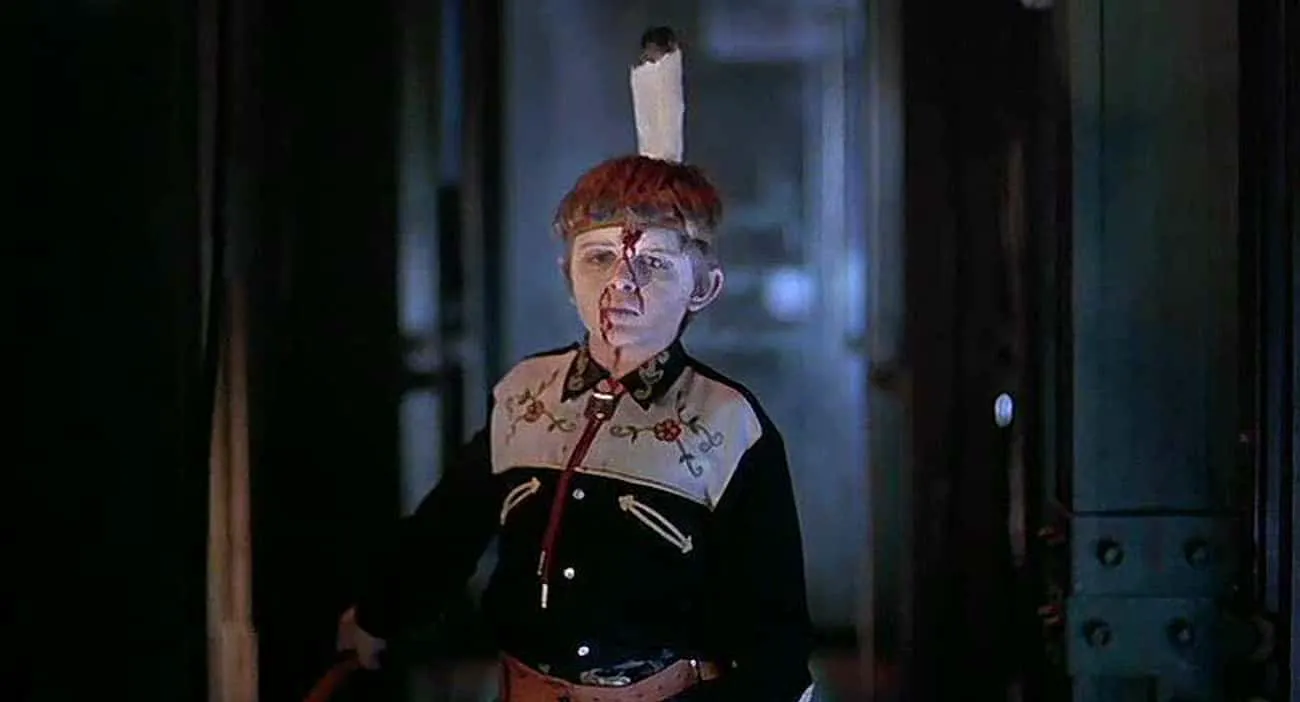
In The Arcanum, the Firstborn Son (Primus Filius in Latin) is depicted as a young boy with a split head. In the DVD’s special feature detailing the ghosts’ origins, Cyrus Kriticos, portrayed by F. Murray Abraham, describes Billy Michaels, the boy who became the Firstborn Son, as “just a stubborn little boy” whose “obsession with the world of cowboys and Indians superseded everything else.”
The special feature states that Billy was playing “cowboys and Indians” with a neighbor when the other boy found a bow and arrow. The special feature claims Billy died wearing his cowboy outfit, although in the film, he also sports an Indian headdress with an arrow lodged in his forehead.
“His rebellious attitude and refusal to accept defeat made him perfect for my needs…” Kriticos concludes.
The Torso
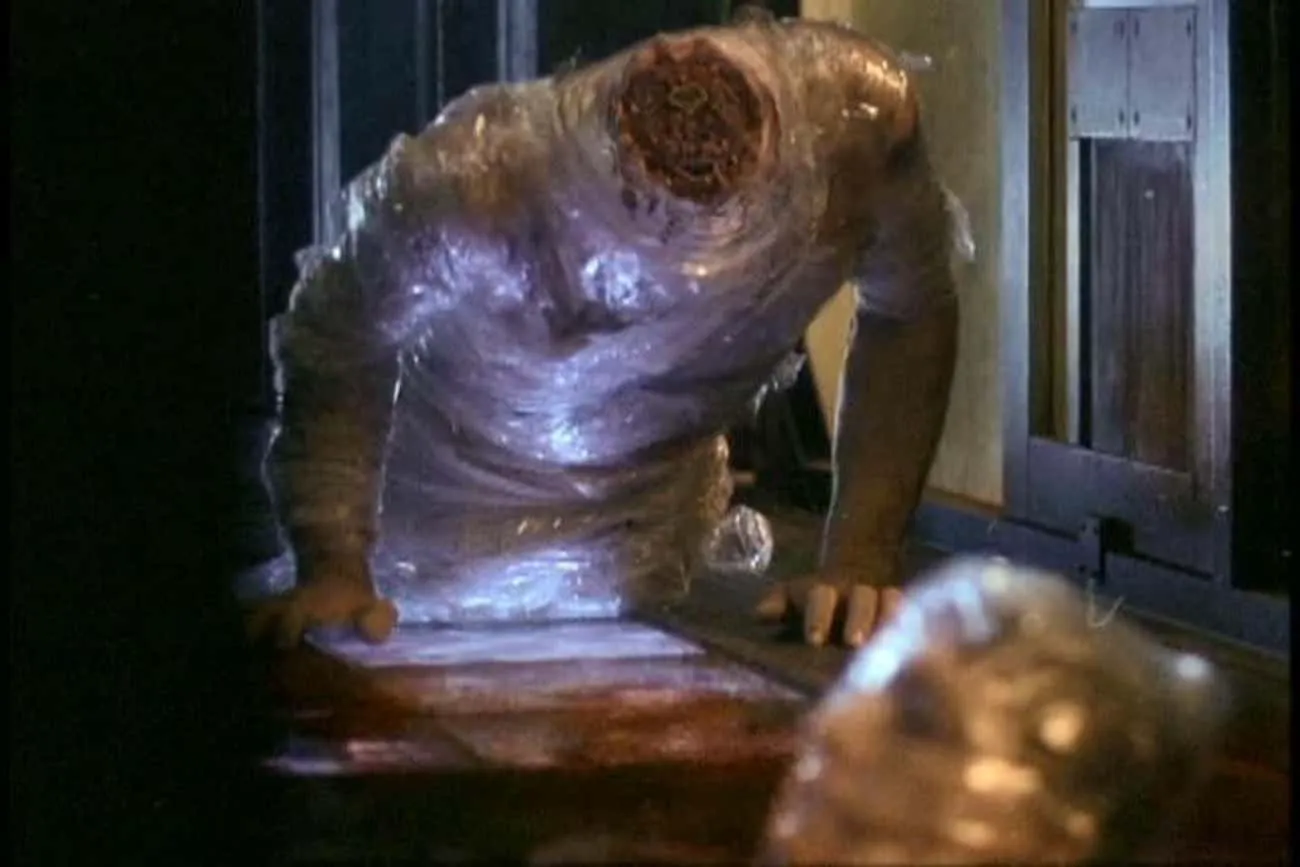
The Arcanum depicts the Torso (Truncus, or simply “trunk”) as a long-haired human figure without a lower body, walking on his hands. In the film, the Torso’s head is severed, and both the torso and head are encased in clear plastic.
According to Kriticos in the DVD special feature, the Torso was once Jimmy Gambino, a gambler. Jimmy lost a bet to Larry Vatello, and when he couldn’t pay his debts, Vatello taught Jimmy a lesson before encasing him in clear plastic and dumping him in the sea.
The Bound Woman
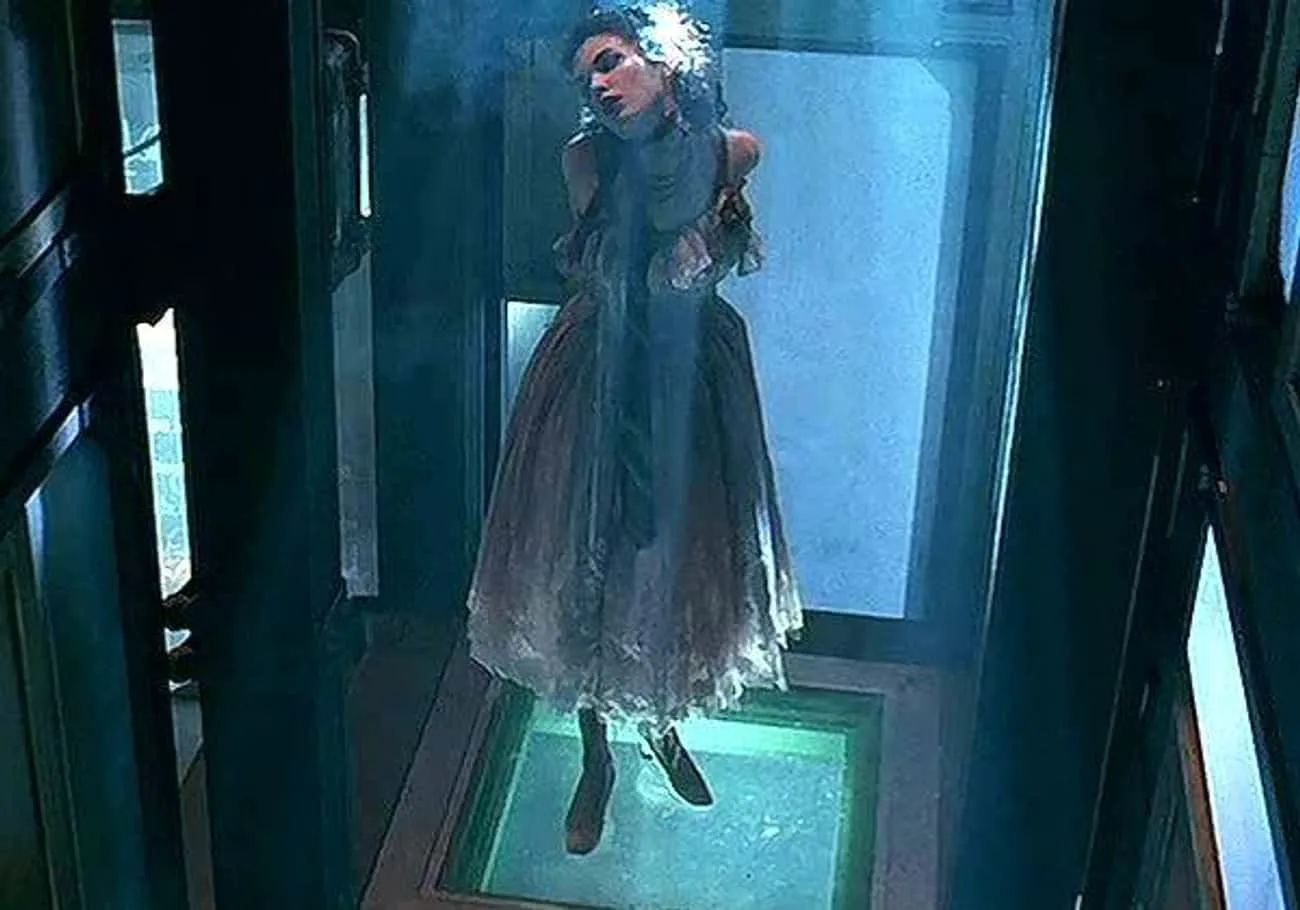
The third ghost mentioned in the Black Zodiac is the Bound Woman, and the illustration in The Arcanum is of a sullen woman wearing an Elizabethan collar. Kriticos chose Susan LeGrow for this role, describing her as “a girl born with a silver spoon in her mouth.” Kriticos later adds, “Her parents were the richest people in town, so Susan became the most popular girl in school.”
However, Susan often teased, taunted, and rejected men’s affections, leaving “a trail of broken hearts” until Chet Walters, the star quarterback, found her with another man on prom night. Chet beat up her lover, and Susan disappeared. Two weeks later, she was found “buried 150 feet beneath the football field.”
While Kriticos admits that Chet Walters would have been a quality addition to his evil ghost squad, the Bound Woman was more what Basileus’s machine required, and Susan’s ghost fit the bill. In the film, her ghost appears on hanging ropes, although the illustration in The Arcanum shows another ghost with the same fate.
The Withered Lover
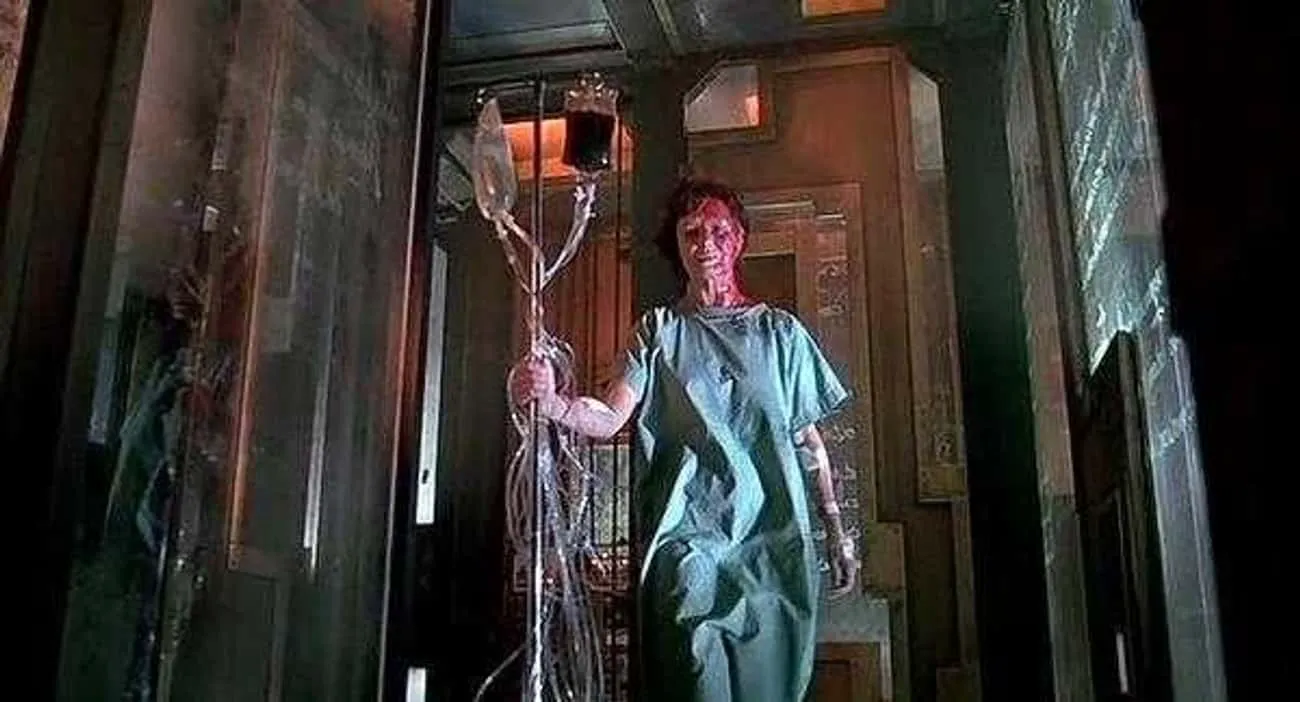
For the role of the Withered Lover, Kriticos chose his own niece-in-law, Jean Kriticos. Jean died in a fire, forced to separate from her husband, Arthur Kriticos, and their two children. The fire also left half of her body severely burned, making her an ideal choice for the Withered Lover.
In the special feature explaining each ghost’s origins, Kriticos claims that Jean had “the magnitude of anguish I needed.” The feature also describes a fire that broke out on Christmas Eve, where Arthur accidentally left his wife to die in the fire while saving his children. However, in the film, Jean is wearing a hospital gown and pushing an IV stand, indicating that she did not ultimately die in the house, but at St. Luke’s Hospital.
In The Arcanum, the Withered Lover (Amator Marcidus) is the only one depicted as a benevolent spirit, appearing to float in water wearing a long dress with vines in the background.
The Torn Prince

Born in 1940, Royce Clayton would later become Kriticos’s Torn Prince. He lived a “miserable small-town life,” and what helped him escape that was his “slugger” skills on the high school baseball team. Therefore, this ghost carries a baseball bat. A newspaper in the special feature calls him a “local hero” who tragically died in a car race when he crashed into a train, which explains the upside-down car he carries with him in his cell.
In The Arcanum, the Torn Prince (Eques Scissus in Latin, more accurately translated as “Torn Knight”) is depicted as a painter holding a paintbrush and easel in his left hand, with his right arm missing from the elbow down and all the flesh stripped from the right side of his body.
The Angry Princess
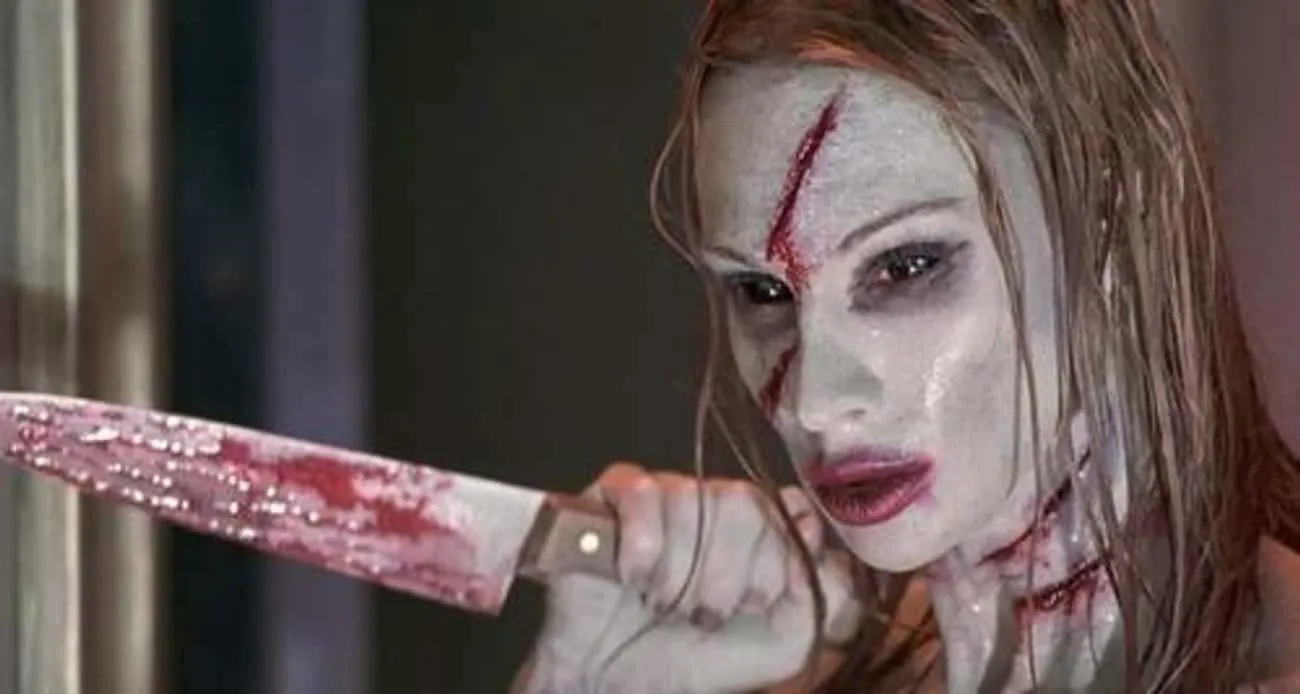
In the film, the Angry Princess is one of the most visually striking ghosts. She appears as a pale, unclothed woman with wet hair and gruesome wounds all over her body, wielding a knife. The film’s special feature tells us that her real identity was Dana Newman, a young woman whose “beauty brought her demise.” After an unfortunate love life, she found work in plastic surgery, but her wages were spent on “endless unnecessary surgeries.”
After attempting to perform surgery on herself, she eventually committed suicide in the bathtub. This may also explain why she appears in the house’s bathroom.
In The Arcanum, the Latin next to the Angry Princess’s illustration actually indicates that she ended her own life, while the illustration depicts a cloaked woman tied to the end of a rope.
The Pilgrimess
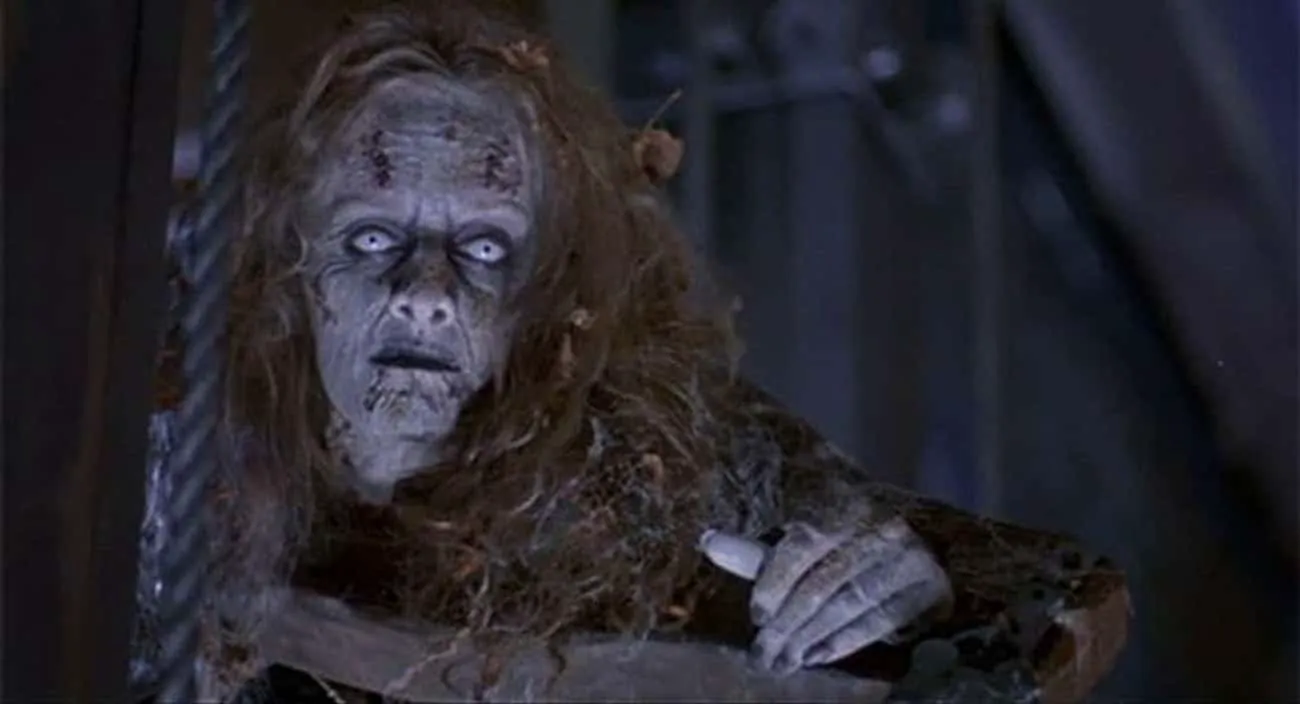
In The Arcanum, the Pilgrimess is only depicted as a somber-faced woman wearing a traditional bonnet. Unlike most other ghosts, there is no Latin next to her image, only the symbol representing her in the Black Zodiac.
In the film, she only makes a brief appearance, appearing as an old woman in shackles. The film’s special feature tells us that Miss Isabella Smith was Kriticos’s choice to play the Pilgrimess ghost. “Her story begins in 1675 when the destitute Isabella left England, hoping to find a comfortable home in a quaint New England town.” But “those locals didn’t trust outsiders,” and when their livestock began to waste away, they believed Isabella must be a witch.
So they trapped her in a barn and set it on fire. And when she survived unscathed, they took it as proof that their suspicions were correct and sentenced her to prison, where she eventually starved to death after weeks of survival.
The Great Child and the Terrible Mother
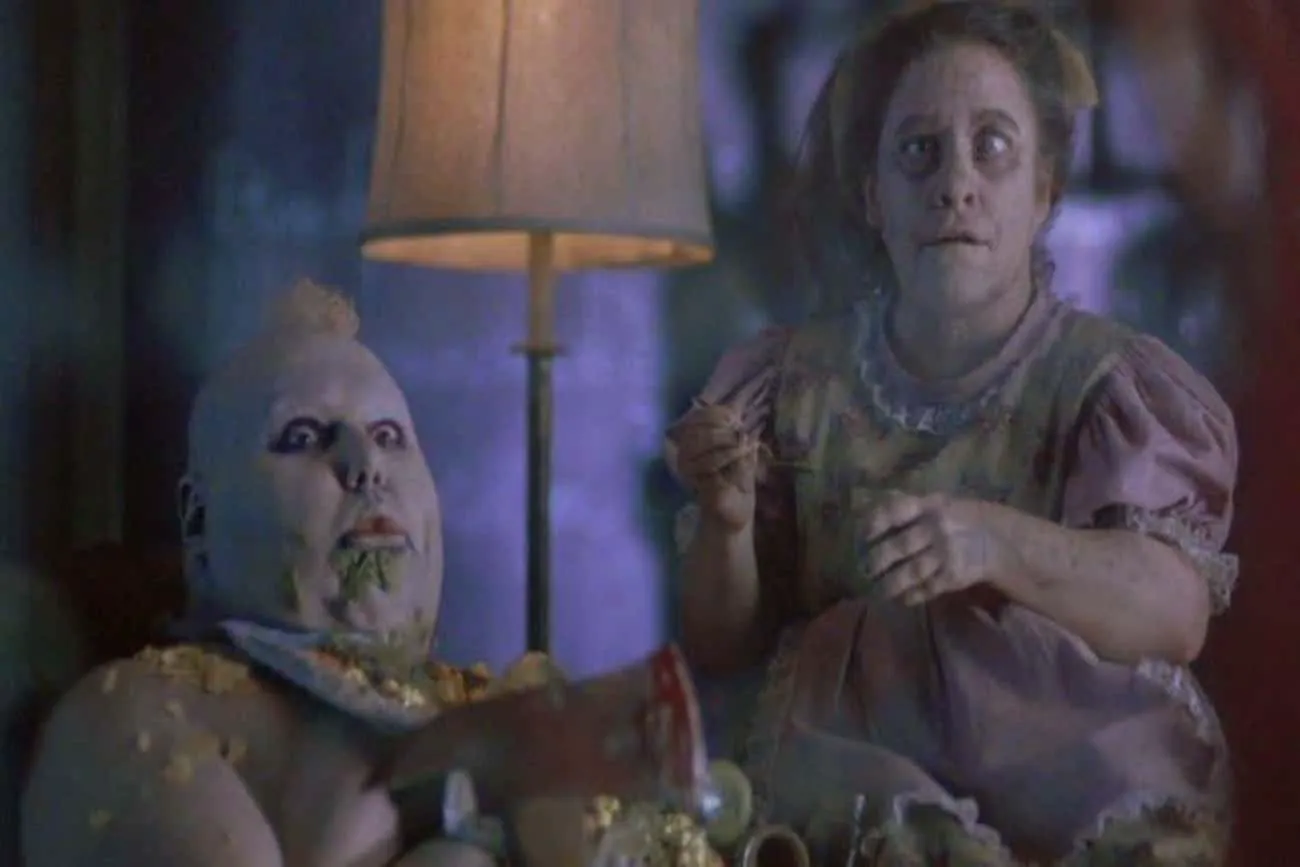
In the Black Zodiac, the Great Child and the Terrible Mother are depicted as giant figures. The Latin next to the illustration isn’t much help, as it only says the noun Mures, which can be translated as “mice.” Considering the intellectual development of the ghost representing the Great Child, Harold Shelburne, was only equivalent to that of an infant in life, this may be a reference to the novel Of Mice and Men, after all, the novel has a huge and very strong but intellectually disabled protagonist.
The DVD special feature tells us that Harold’s mother, Margaret Shelburne, was only 0.91 meters tall. She had worked in a traveling “freak show” when she was taken by burly men without consent. Afterwards, she gave birth to Harold, who also went to the show. She was very protective of her son and took care of him until adulthood, to the point that her son could not even eat on his own and still wore diapers. This led to them both being excluded from the “freaks”. Then one day, the “freaks” took Margaret away as a prank.
Unfortunately, the prank went wrong and Margaret suffocated in the bag they put her in. When Harold found out, he picked up an axe and launched a bloody revenge. When the boss found out about this, he eliminated Harold in a very terrible way.
In addition to being the only pair of ghosts, the Great Child and the Terrible Mother have a unique history. According to the film’s commentary, Harold’s original fate was that he choked on vomit and fell on his mother. The filmmakers felt that this backstory was not thrilling enough, so they created a more detailed story for Harold and Margaret. This may also explain why they are the only major ghosts that appear in the same image as they were in life, and did not show what caused their different fates.
The Hammer
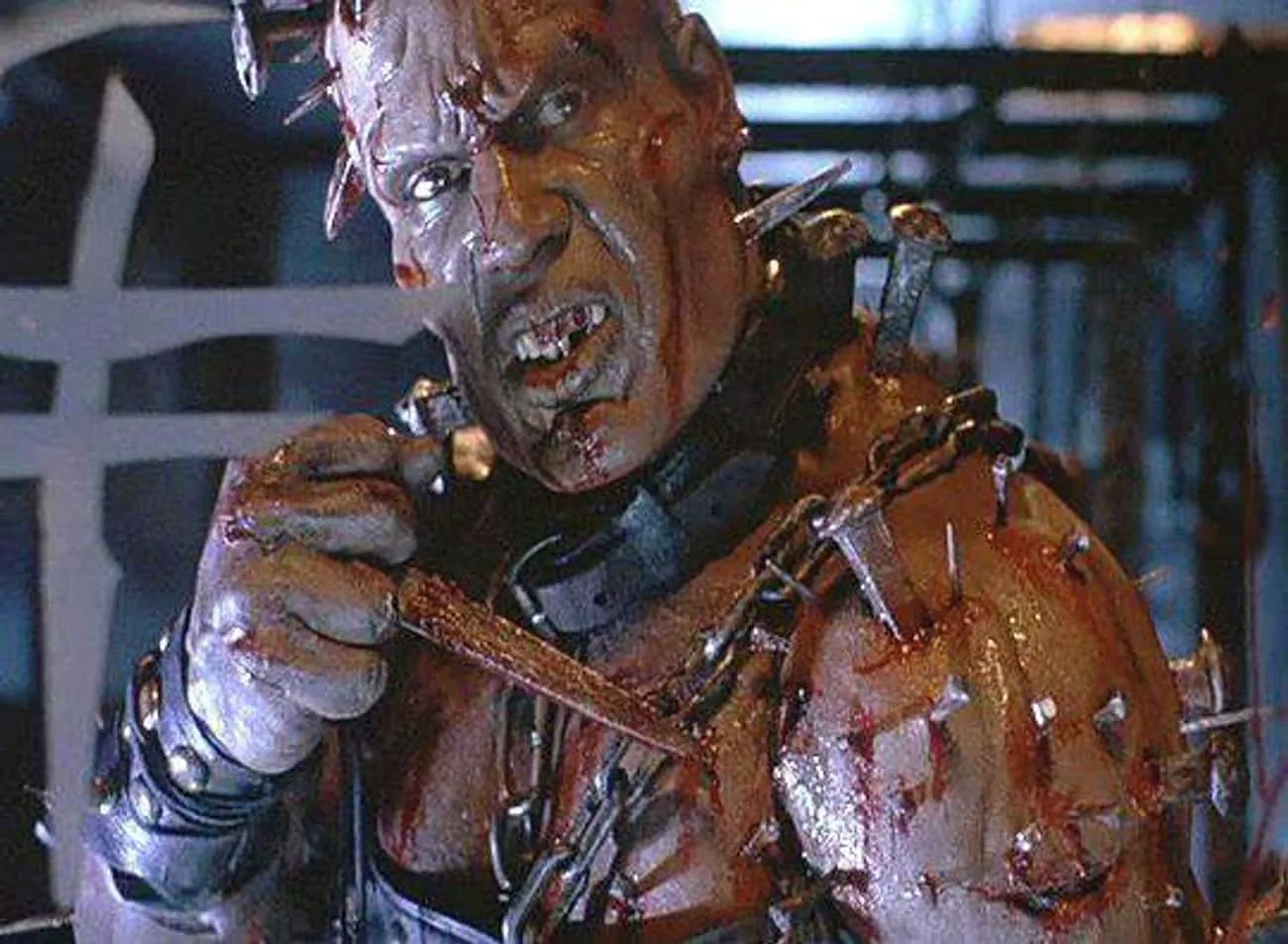
In the early 1890s, George Markley was falsely accused of theft while working as a blacksmith. After the townspeople vented their anger on Markley’s wife and two children, he retaliated against those responsible with his hammer. Eventually, the other local residents caught Markley and dragged him back to his shop, giving him “a savage frontier justice.” Afterwards, he was tied to a tree and nailed deeply.
In the film, Markley’s ghost is covered in nails, and his hands have been replaced by his prized hammer. In the Black Zodiac, the Hammer is a muscular, bearded man wearing a blacksmith’s apron and wielding a giant hammer. The Latin inscription reads Malleus Ignis, meaning “Hammer of Fire.”
The Jackal
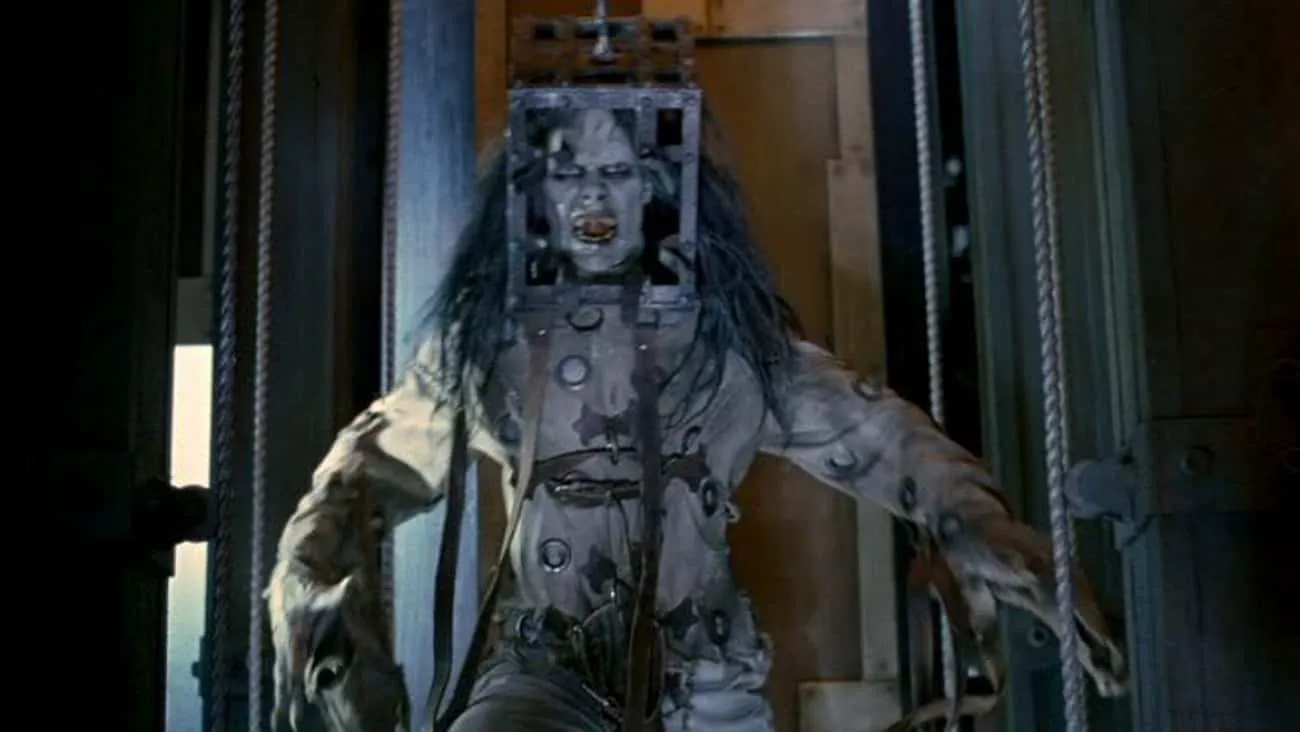
One of the “star” ghosts in the film, the Jackal is given a very prominent display, wearing what looks like tattered tights and a metal cage on his head. One of the characters describes him as “the ghost version of Charlie Manson.”
The DVD special feature tells us that the ghost who became the Jackal was once a man named Ryan Kuhn, born in 1887. In life, he acted like a beast, chasing after “vagrant women.” Later, he voluntarily entered a mental hospital “to cure his insatiable desires,” but after years of imprisonment, he went completely insane and began scratching the walls. Later, he voluntarily died in a fire at that mental hospital.
The Jackal is one of the more memorable ghosts in the film, with several opportunities to harm the residents of the house. He is also the only ghost whose position in the Black Zodiac is explained in the film, with one character saying that his mark is “the sign of the winter of hell.”
In The Arcanum, only the Jackal’s head is depicted in a cage. And the Latin inscription below his mark reads “Canis Aureus”, meaning “Golden Dog”.
The Juggernaut
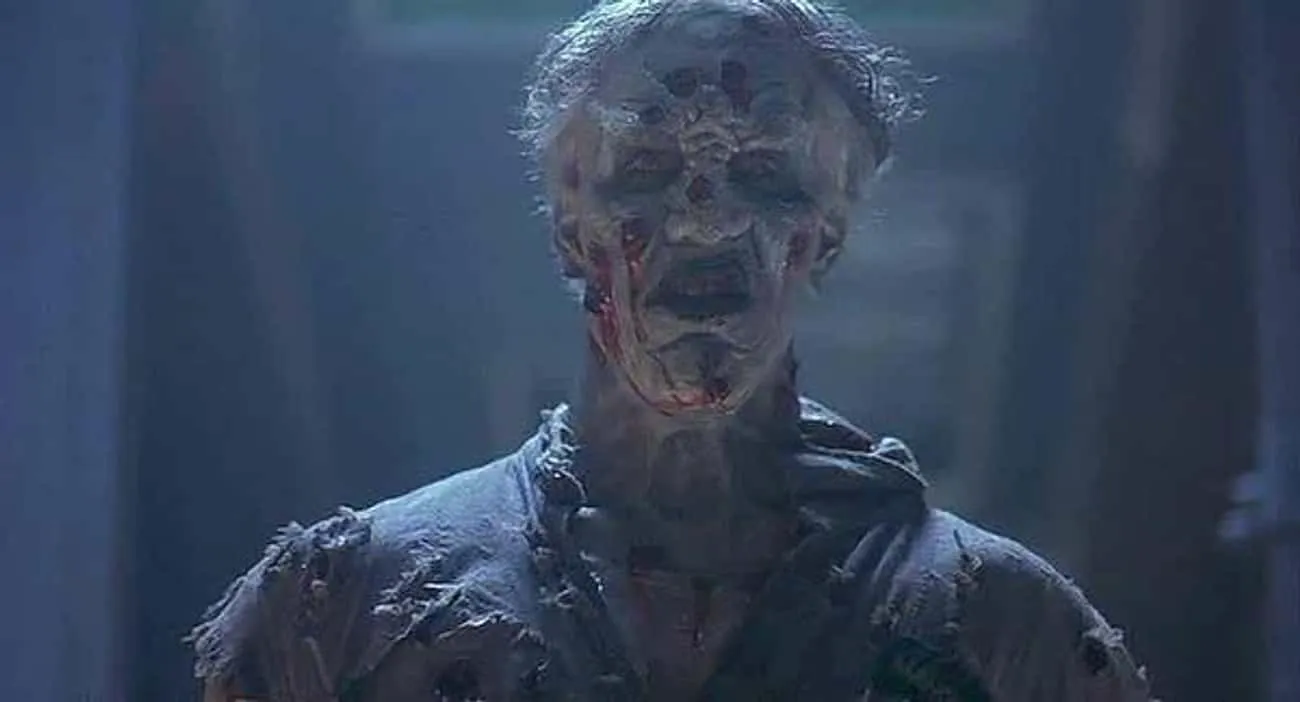
Horace Mahoney is one of the ghosts who becomes heavily armed, and we actually see Mahoney being captured by Queteus and his group at the beginning of the film. Nicknamed “The Breaker” because he liked to “break targets into as many pieces as possible,” he became a serial killer. He killed nine people in his life and more than 30 after becoming a ghost.
According to the DVD special feature, the “huge and ugly” Mahoney was abandoned by his mother at a very young age and spent his entire life in his father’s old car dismantling yard. When his father died, Mahoney turned to more unnatural hobbies. He would beat people up and feed them to his dogs. The police eventually caught him and “shot more than 50 bullets” into his huge body, which is why his ghost looks riddled with bullet holes.
In the Black Zodiac, only the angry face and shoulders are depicted. Next to his Black Zodiac mark, the Latin inscription simply reads Titan.
The Broken Heart
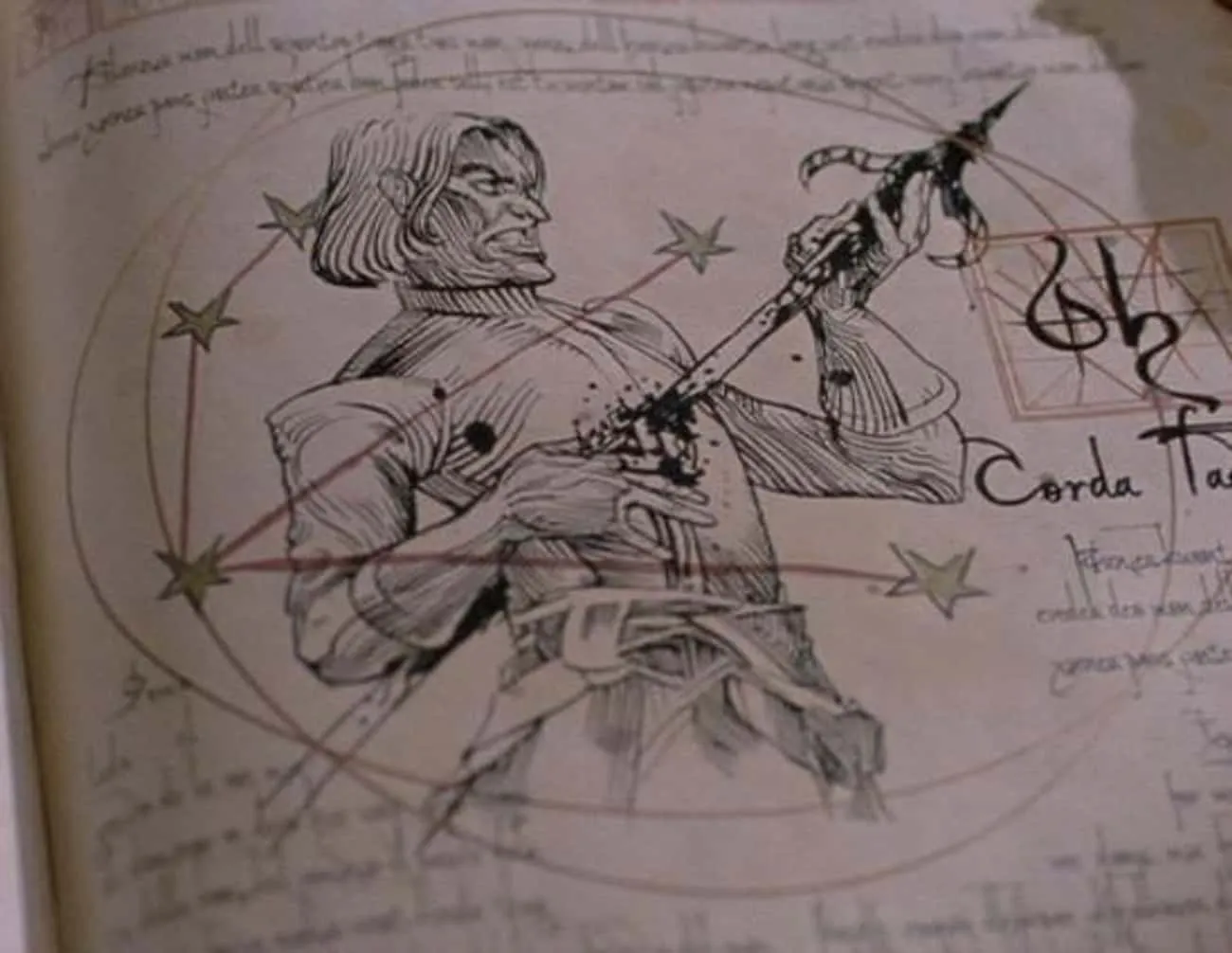
In the Black Zodiac, the Broken Heart is the 13th ghost, “the sacrifice of life…the only ghost created by pure love.”
One of the characters describes the 13th ghost as “fail-safe,” needing it to stop the whole process. He says: “The sacrifice of a person willing to sacrifice himself, standing before the final opening of the eyes; when the eyes open, the soul uses the power of life to essentially shorten the running time of the system.” However, as we know at the end of the film, this is not true. Instead, the Broken Heart is the final ghost Kriticos needs to complete the Basileus machine, and chooses his nephew Arthur as the sacrifice. This is because he knew Arthur would voluntarily give his life to protect his children.
In the Black Zodiac, the Broken Heart is depicted as a knight who looks like he is stabbing himself in the chest with his sword. The Latin inscription next to his symbol reads Corda Tacita, meaning “Silent Heart”. At the beginning of the film, the key that Arthur uses to unlock the door to the house also shows the mark of the Broken Heart.